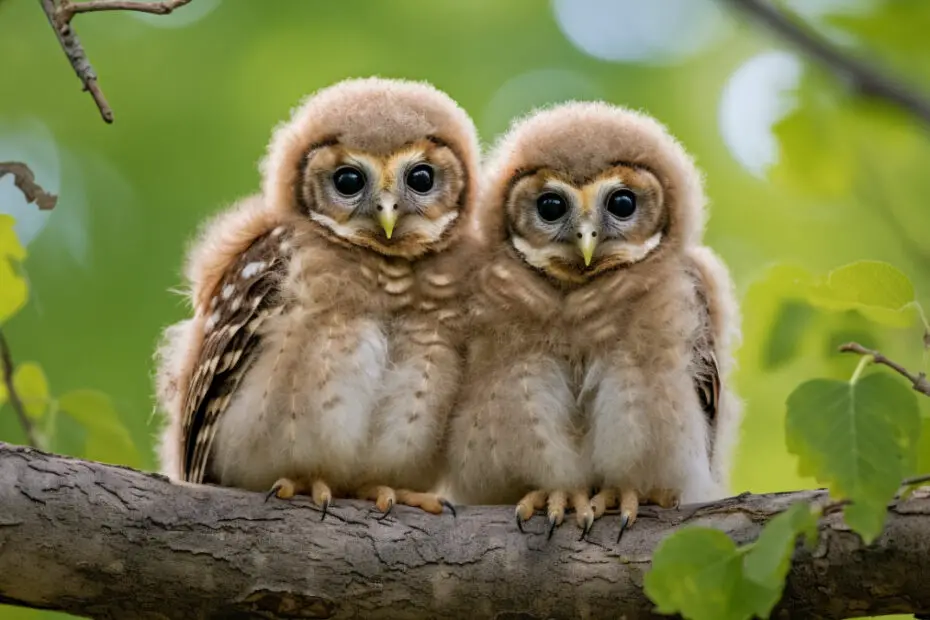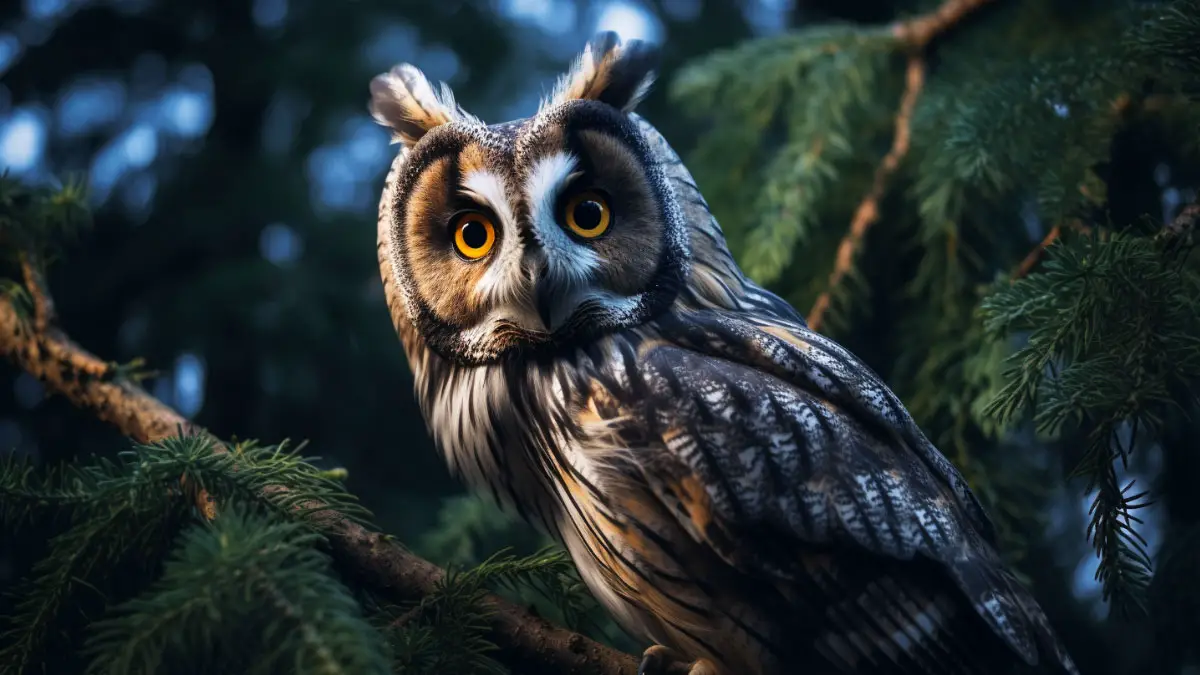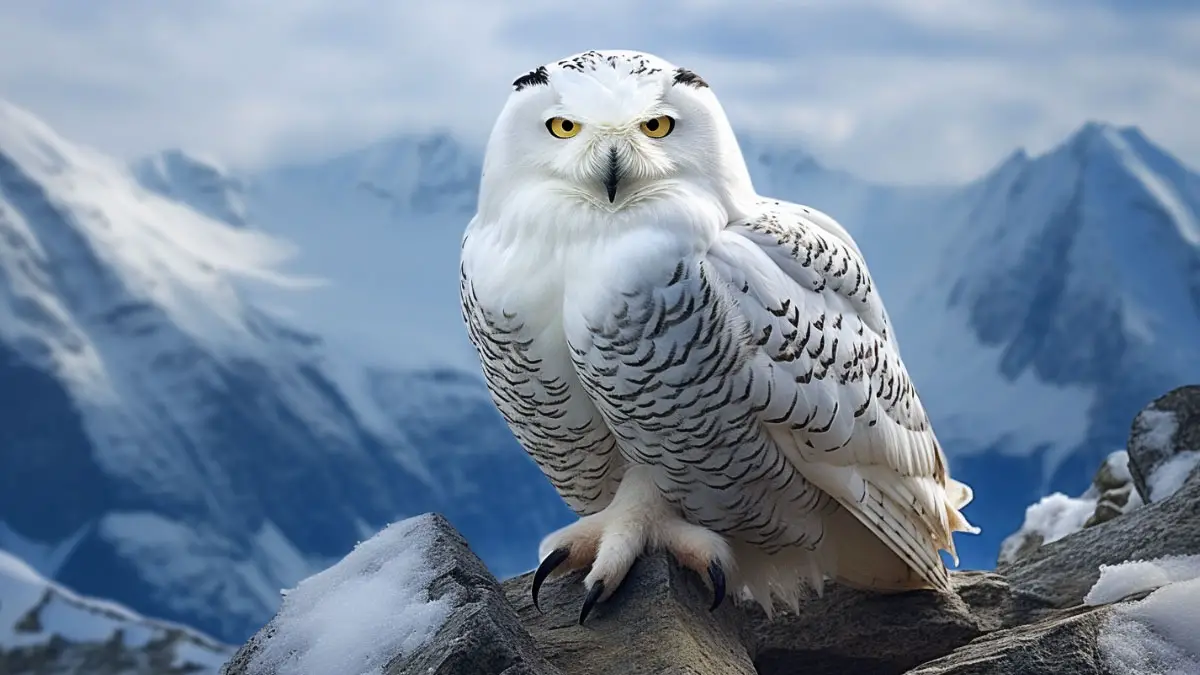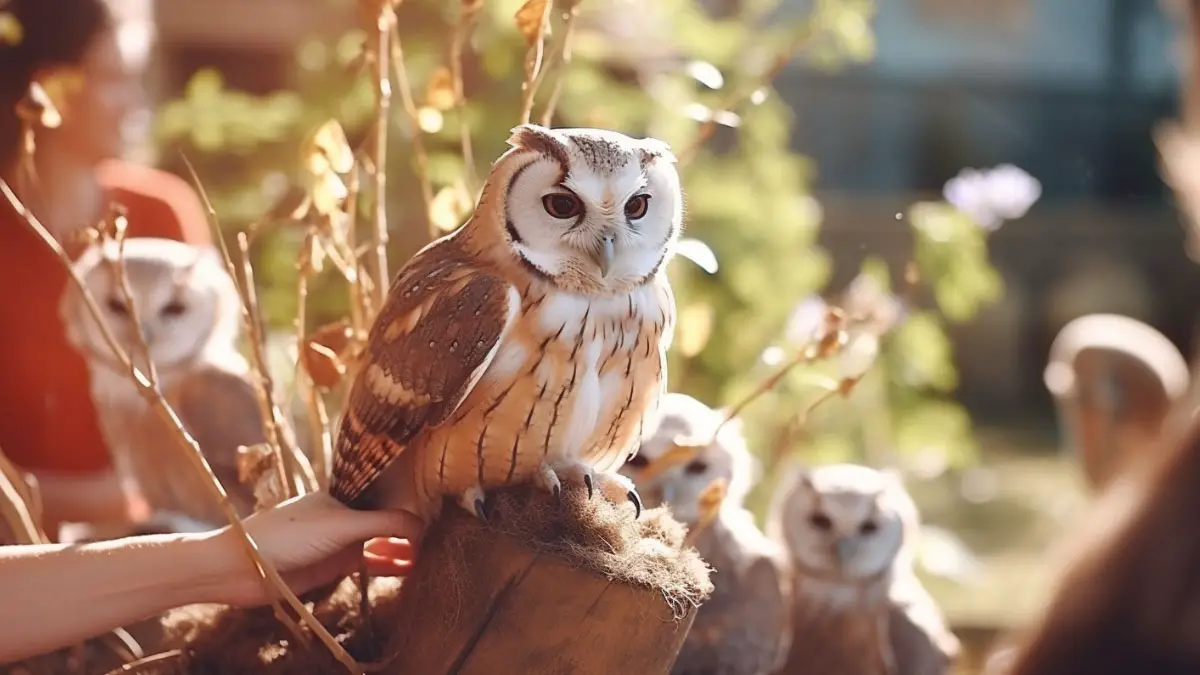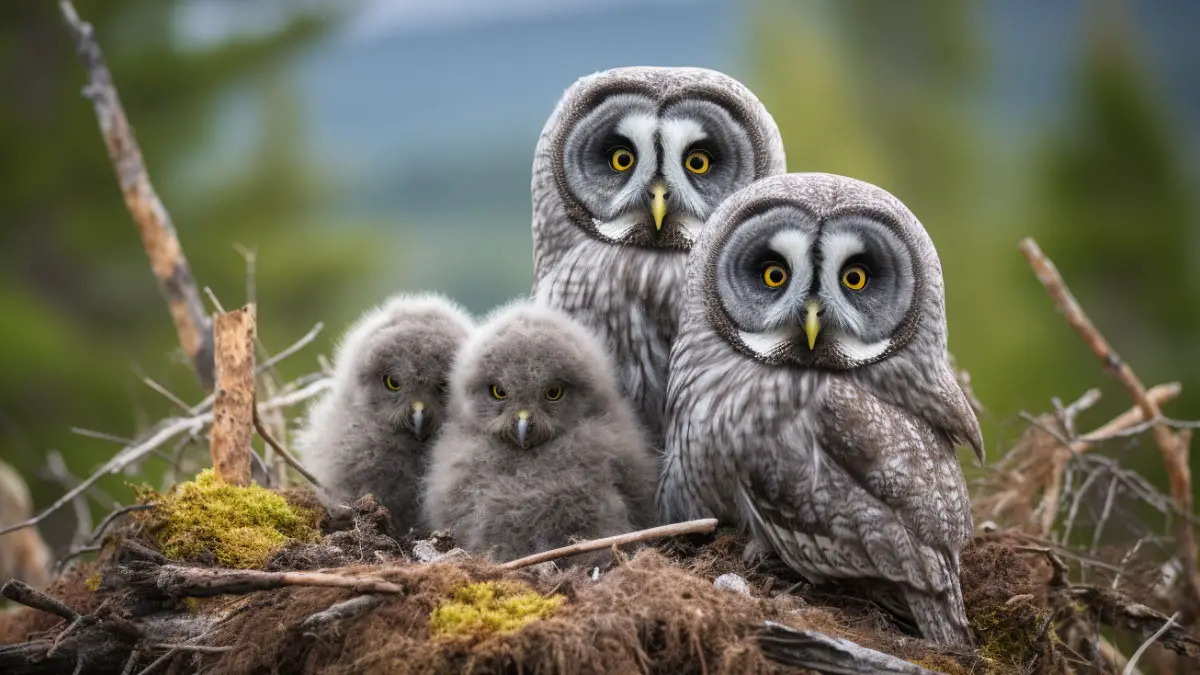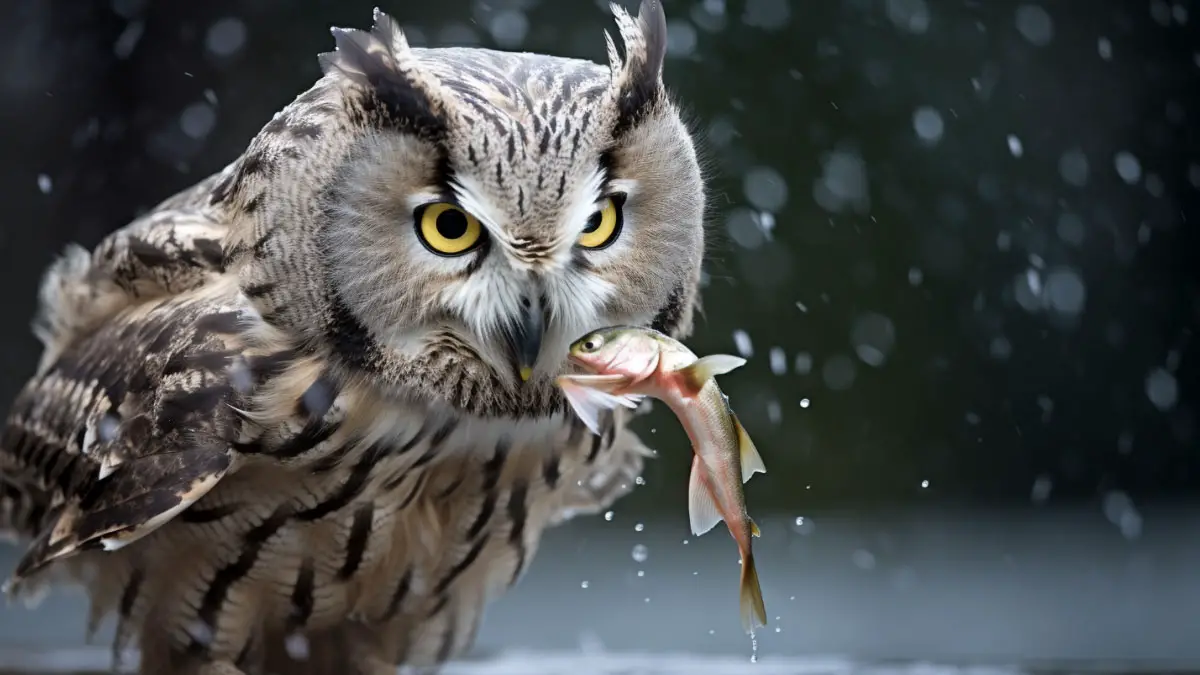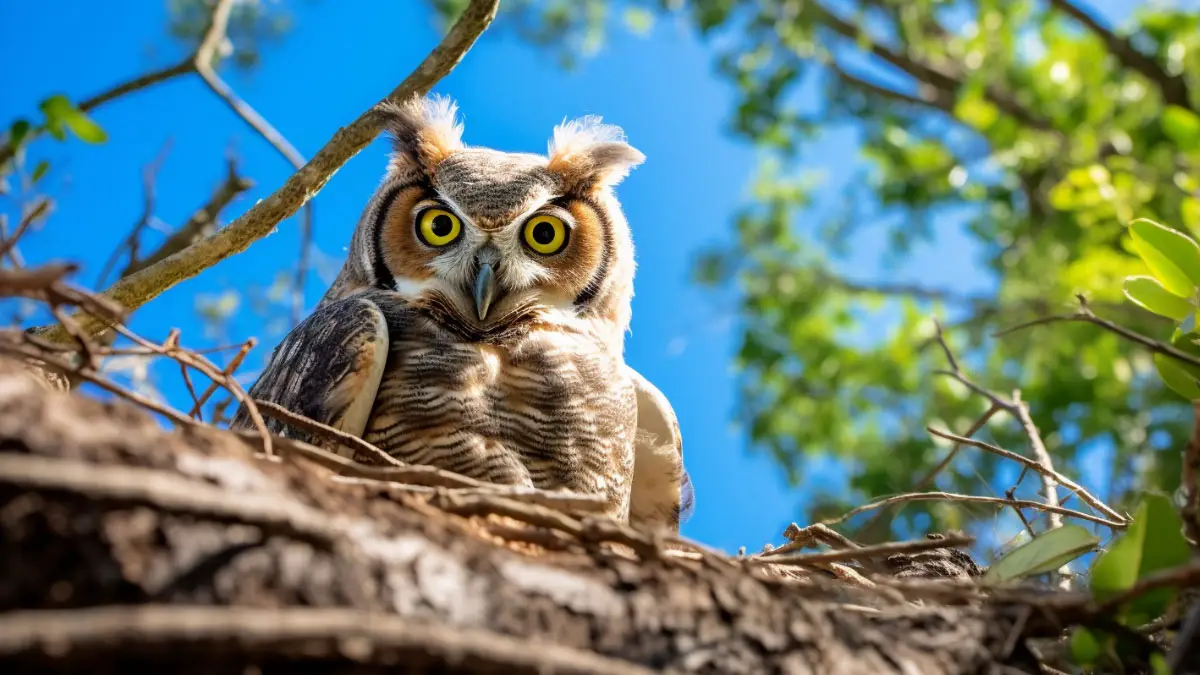An owl’s hooting on a moonlit night should probably be one of the most mystic moments on planet Earth. No matter how spooky it is, it does cross our minds what this hooting is all about. There should be a definite reason.
So, why do owls hoot? Well, there are at least two clear reasons – to communicate with other owls and to attract a mating partner. Other reasons include fear and defense-calling, announcements for claiming territory, etc.
The nature of owl-hooting in different owl species can vary. Also, the time of the day plays a role in the variety of the tone. Read along to learn more as we explore the variation of owls’ hoot in detail!
Understanding Owl Hooting?
Hooting is basically a vocalization of birds, especially noticed in the Strigiformes orders under the Aves class. Birds use various sounds to communicate, and the Syrinx is the organ responsible for producing these sounds.
Think of the Syrinx as a bird’s voice box, like the larynx in humans. Just as people have different voices, birds from different species have different sounds because of variations in their Syrinx.
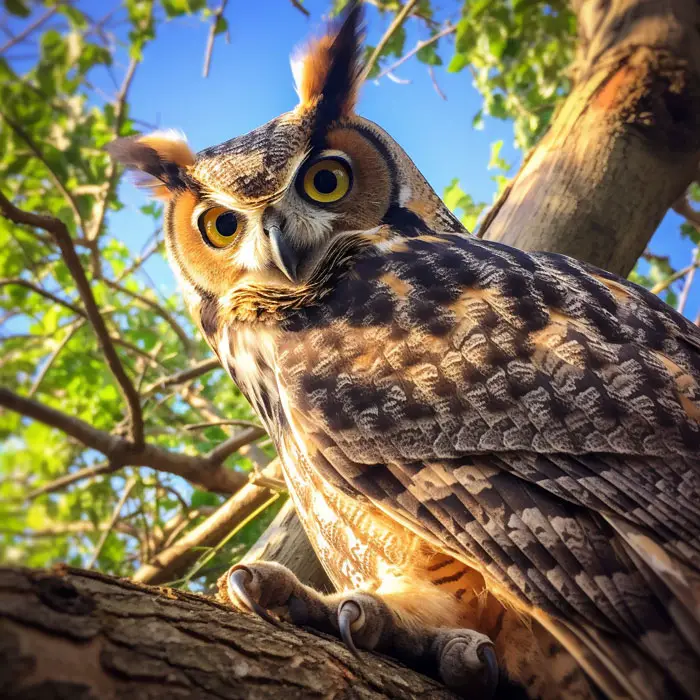
Owls don’t just shoot randomly; they have a reason for it every time. Each owl has its own special version of hoot – it might be higher or lower, louder, or softer. Even though we might not notice the differences, owls can tell.
This helps them know if the hoot is from an owl they know or a stranger. If it’s from an owl they don’t recognize, they might get a bit upset and hoot back more fiercely. It’s like how you might react if a friend said something in a way you didn’t recognize – owls want to know who’s talking!
Why Do Owls Hoot – A Deeper Dive
There are several reasons why an owl decides to hoot. The hoot may be translated differently depending on the species and its situation.
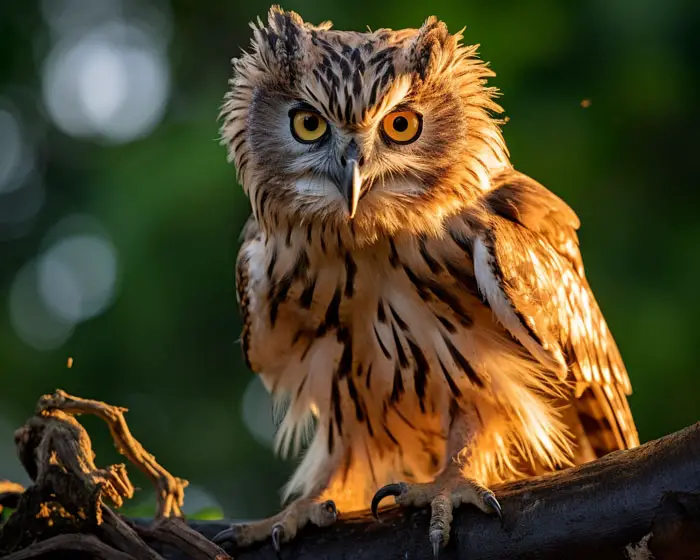
There are typically 6 specific reasons behind an owl’s hooting. They are as follows.
- Mating call
- General communication
- Claiming territory
- The duet hoot
- Defense call
- Alarm call
Now, let’s break down the reasons in detail.
Mating Call
The ‘mating call’ is a specialized vocalization employed by owls during the breeding season to attract potential mates. This distinct hooting pattern serves as a communication tool for reproductive purposes.
The call typically conveys information about the caller’s species and individual identity and often indicates the caller’s fitness for mating. The mating call is characterized by unique pitch, rhythm, and duration, which can vary among owl species.
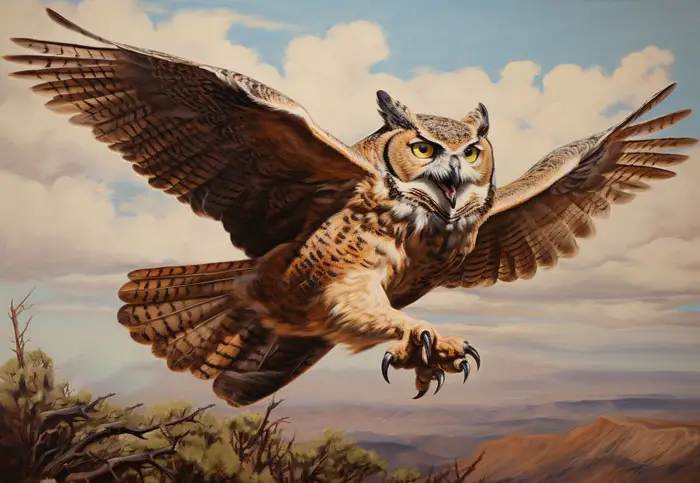
Essentially, it’s the owl’s way of saying, “I’m here, I’m ready to mate, and here’s why you should choose me.” The intricacies of the mating call contribute to the owls’ reproductive success and the continuation of their species.
General Communication
Hooting doesn’t always have to be specific. Owl’s hooting involves a diverse range of vocalizations used for everyday interaction. These communicative hoots are not specifically tied to mating or territorial claims but serve as a means for owls to convey various messages within their social groups.
These hoots can include greetings, expressions of contentment, or even casual exchanges between owls. These hoots’ pitch, rhythm, and intensity may differ based on the context and the individuals involved.
Essentially, regular communication hooting facilitates social bonds, reinforces group cohesion, and contributes to the overall coordination of owl communities in their shared environment.
Claiming Territory
This is a specialized vocalization by owls to establish and assert their territorial boundaries. During this behavior, owls emit distinct hoots that serve as an audible declaration of ownership over a particular area.
These territorial calls communicate information about the owl’s presence, status, and readiness to defend its territory. The hooting patterns in this context are often intense and can convey warnings to other owls to stay away.
Through these territorial hoots, owls aim to prevent conflicts, reduce competition for resources, and ensure the security of their designated space within the ecosystem.
The Duet Hoot
The ‘Duet hoot’ is a coordinated vocalization performed by owl pairs, typically during the breeding season. This behavior involves both male and female owls contributing to a synchronized hooting pattern.
Duet hooting is a specialized form of communication that strengthens the bond between owl mates. It is a collaborative display of their partnership, often signaling their commitment to each other and reinforcing the pair’s connection.
The synchronized hoots reveal information about the pair’s compatibility and readiness for reproduction.
Defense Call
Owls deploy a distinct “defense call” to signal their presence and convey a sense of unease. This unique hoot is an audible warning, broadcasting a message like, “I’m here, and I might not be happy.”
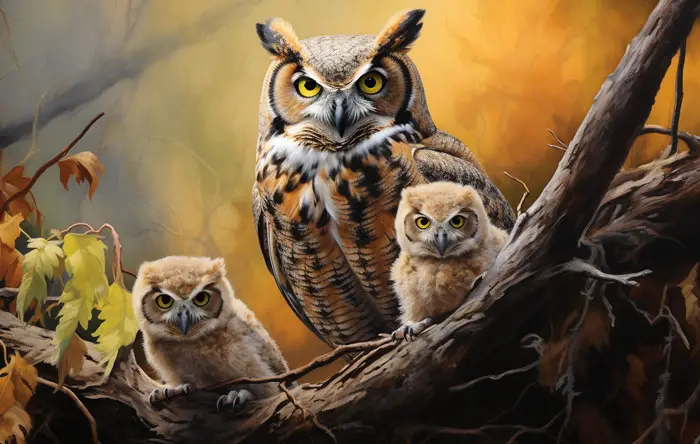
If an owl encounters an unfamiliar hoot or perceives a threat, this specialized call is an alarm, effectively saying, “Stay away; I’m not in the mood for company!”
The defense call is crucial for owls’ boundary-setting and conflict avoidance, serving as an essential protective mechanism and alert system in their natural habitat.
Alarm or Fear Call
Owls emit ‘fear calls’ as a response to potential danger. These respond to perceived threats, constituting specialized vocalizations with heightened amplitude and distinct tonal qualities.
It’s their way of saying, “Uh-oh, something’s not right here!” The fear calls serve as an alert system to other nearby owls, warning them to be cautious and vigilant. These specialized hoots can vary in intensity, conveying the situation’s urgency.
When an owl perceives a threat, the fear call acts as a communication tool, helping to coordinate defensive measures and ensuring the safety of the owl and its surroundings in the wild.
Do Owls Hoot in the Day?
Many of us have this misconception that owls hoot only at night to make the environment spooky. But owls hoot in the daytime, too! Some specific species hoot in the daytime for territorial defense, communication, mating needs, responding to unusual circumstances, and hunting opportunities.
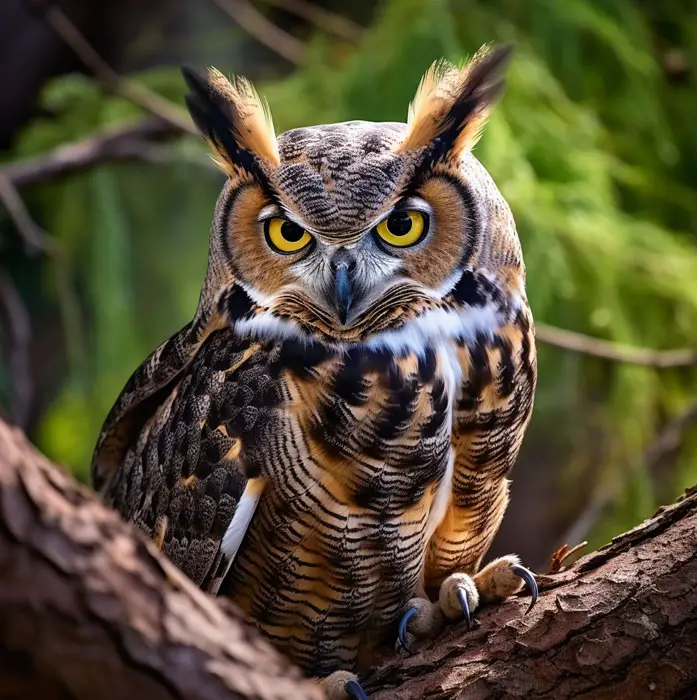
Species that usually hoot during the day are as follows.
- Pacific Pygmy-Owl (Glaucidium peruanum)
- Northern Hawk Owl (Surnia ulula)
- Barred Owl (Strix varia)
- Burrowing Owl (Athene cunicularia)
- Short-Eared Owl (Asio flammeus)
- Snowy Owl (Bubo scandiacus)
Superstitions About Owl Hooting and Debunking Them
With their mysterious nocturnal habits and distinct hoots, owls have been surrounded by superstitions throughout history. One common belief suggests that if an owl hoots near a house, it predicts death or bad luck.
However, owl hooting is a natural behavior linked to communication and territorial defense, devoid of any supernatural forewarnings.
Another superstition claims that hearing an owl hoot signifies a ghostly presence. Contrary to this belief, owls are not harbingers of the supernatural. Their hoots are essential for communication and play a crucial role in controlling rodent populations.
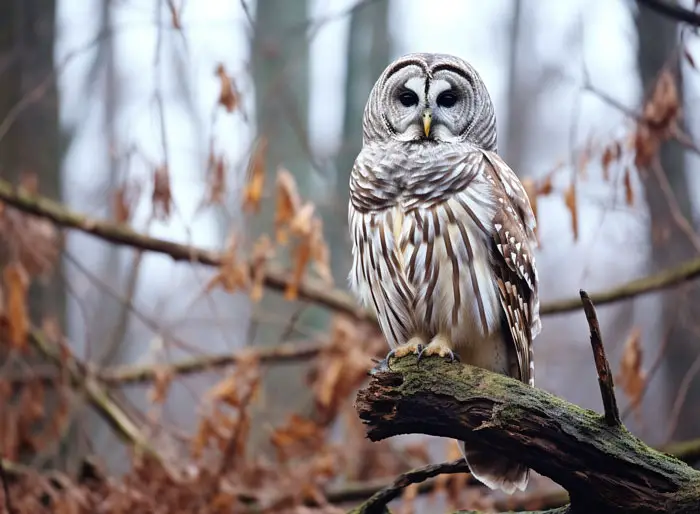
Some believe that owls hooting around a residence can bring illness. Yet, no evidence supports this claim; owl hooting does not influence health, and illness is typically attributed to physical factors.
While superstitions associate owls with predicting bad weather or natural disasters, meteorological science provides more reliable information. Owls adapting to their environment by hooting during the day does not foretell catastrophe.
Understanding the natural behaviors of owls helps debunk these superstitions. This allows us to have a more accurate and informed appreciation of these fascinating creatures.
Frequently Asked Questions
Here are some of the most common queries about owls’ hooting and the answer to them!
Ans. The hooting of owls can be heard over several hundred yards. This is because their calls are adapted to be carried across distances, aiding communication and marking territory.
Ans. Owls are more vocal during the breeding season, exhibiting heightened hooting frequency. This increased vocalization serves for mating calls and territorial displays.
Ans. Birds, like doves and mourning cloak birds, can produce sounds akin to hooting owls. This causes occasional confusion among listeners in identifying the source of the sound.
Final Words
Our journey here through owls hooting actually uncovered their special language. From warning calls to finding mates, each hoot has a unique purpose. Understanding the variety of owls’ calls through Syrinx makes it more interesting.
Owls don’t hoot randomly; they have reasons for every sound. It’s not spooky but rather just a natural way for them to communicate under different circumstances. In fact, the language of owl hooting reveals a remarkable and natural form of expression that connects us more intimately with these nocturnal creatures.
